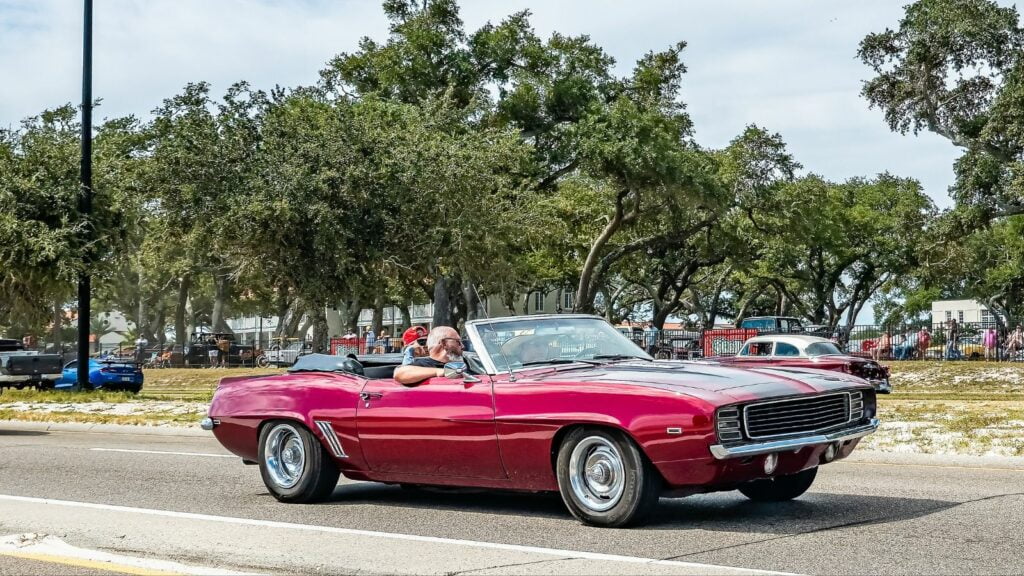The recent United States tariff order of 25% on imported automobiles has had a harsh impact on the automobile sector, and the most directly affected are Canadian-built automobiles. Concerns about the potential increase in car prices and the general economic impact are growing among consumers and industry operators. These tariffs threaten buyers’ affordability and pressure automakers to reconsider their production strategies. Here are 25 Canadian-made vehicles facing massive U.S. tariffs:
Ford GT (2017)
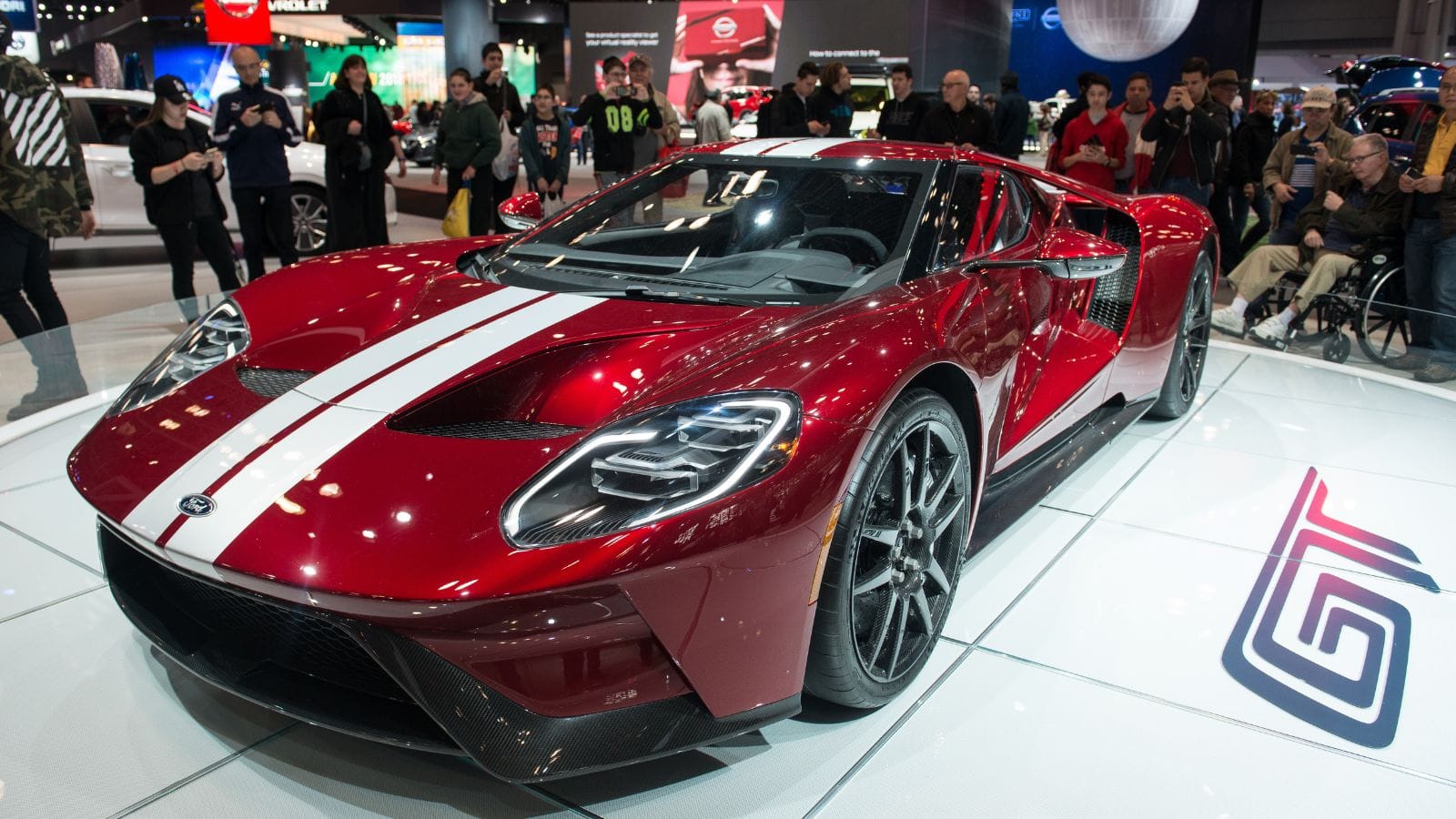
The second-generation Ford GT, which debuted in 2017, reflects high-performance automobile engineering. This supercar features a mid-mounted 3.5-liter twin-turbocharged V6 engine producing 647 horsepower and 550 lb-ft of torque. The interior blends functionality and luxury, with carbon fiber and Alcantara materials featured in the cockpit. The GT accelerates from 0 to 60 mph in approximately 3.0 seconds, illustrating its excellent performance capability.
Chevrolet Camaro (Fifth Generation, 2010)

The fifth-generation Camaro returned in 2010. Its design was borrowed from the original 1969 Camaro, and it had various engine options, like the 3.6-liter V6 and the 6.2-liter V8. The interior had deep-set gauges, a high-profile center console, and available leather seats, blending retro and modern designs. Depending on the engine choice, the Camaro could accelerate from 0 to 60 mph in as little as 4.6 seconds.
Allard J2X MkII (2012)
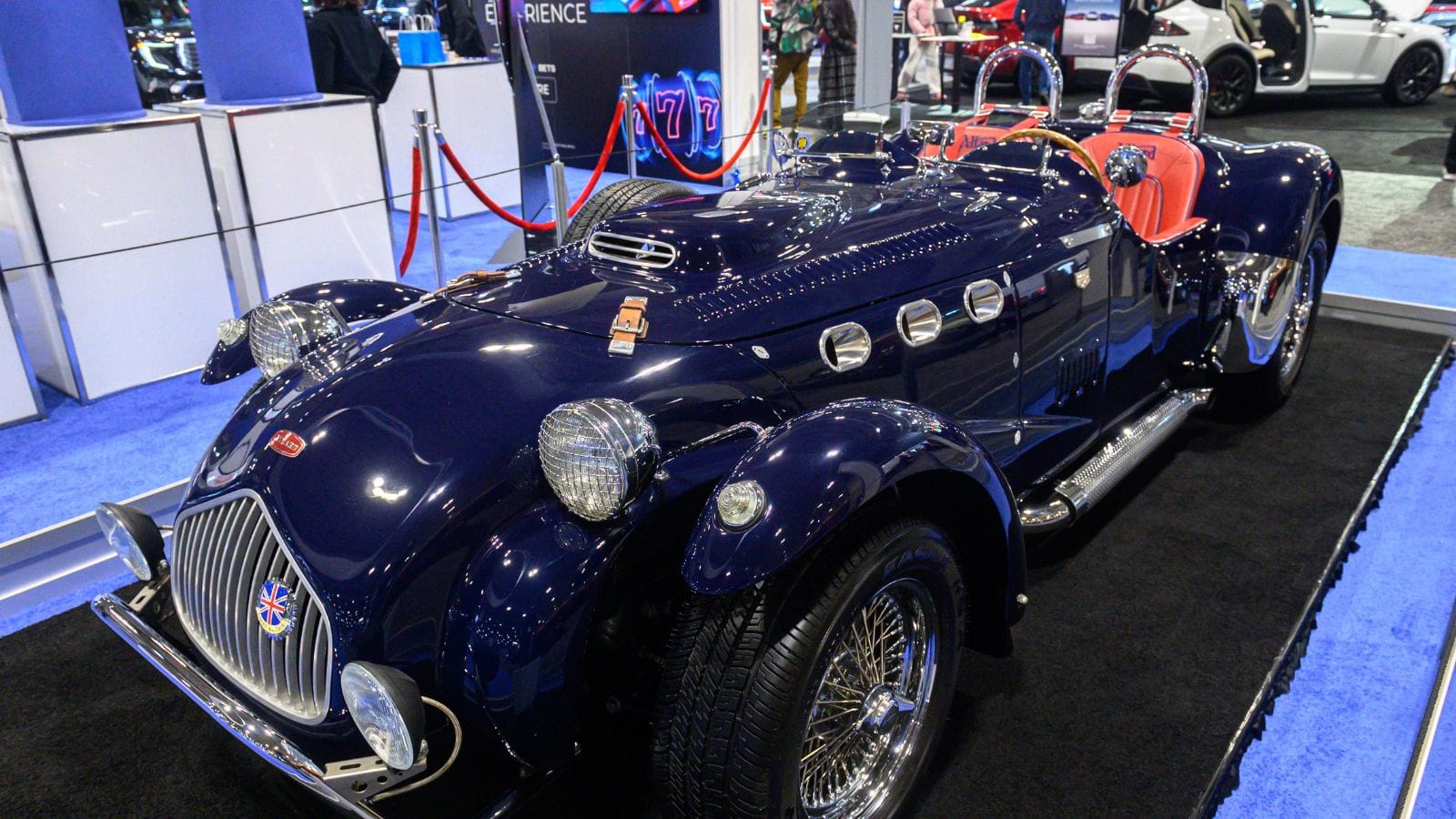
Montreal-based Allard Motor Works introduced the J2X MkII in 2012. The J2X MkII offers several engine options, including a GM Ram Jet V8 of around 350 horsepower. It has analog gauges, luxury leather seating, and hand-finished elements that pay homage to its roots and blend the retro aesthetic with modern comforts. The vehicle performs well, with a 0 to 60 mph acceleration of around 4.5 seconds, depending on the powertrain option.
Felino cB7 (2016)
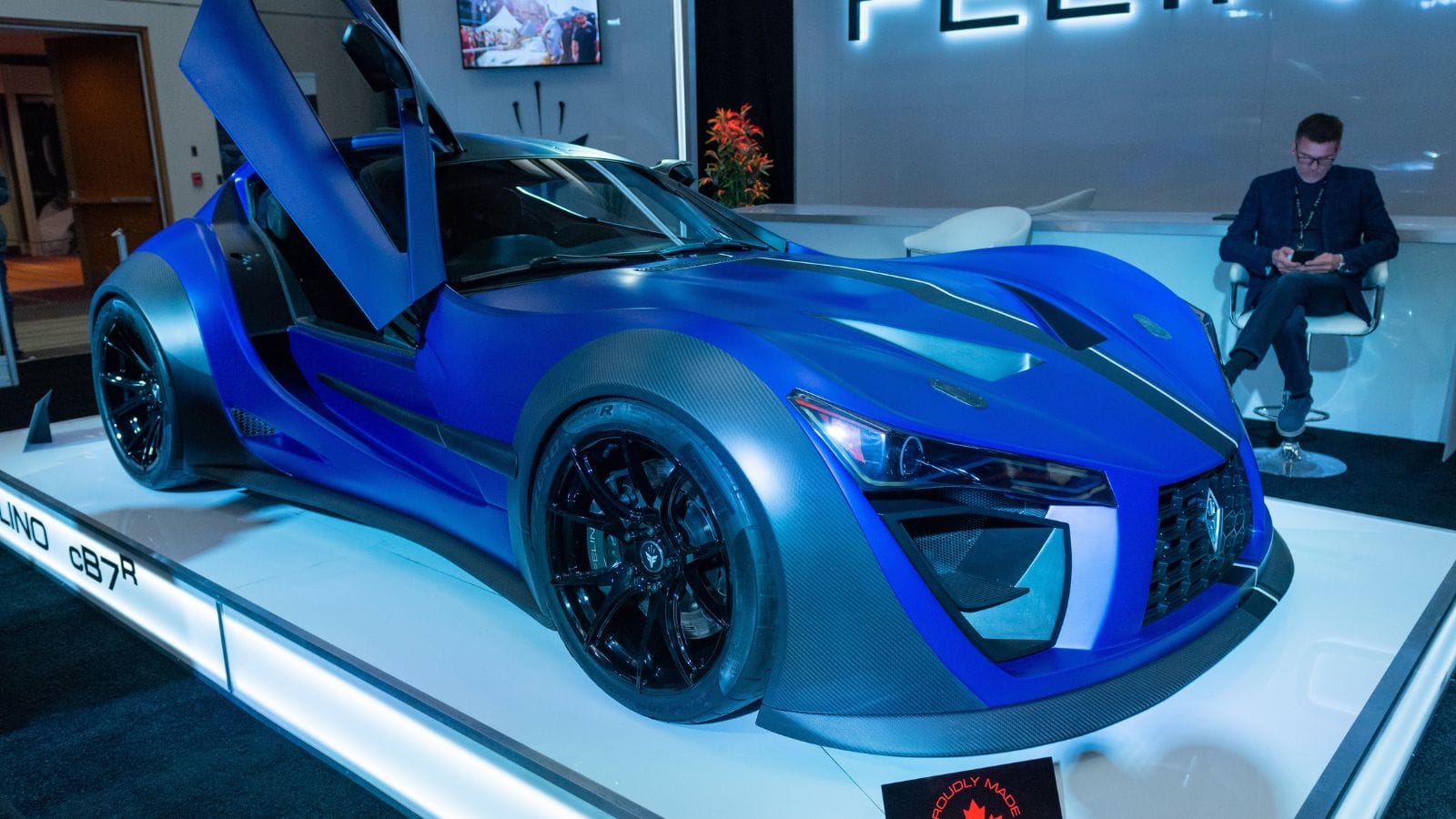
Unveiled in 2014 and entering production in 2016, the Felino cB7 is a Canadian sports car penned by racing driver Antoine Bessette. This road-going track car is powered by a V8 that makes 525 horsepower and 486 lb-ft of torque from its naturally aspirated 6.2-liter V8 engine. The interior is stripped down, featuring racing seats, a multifunction steering wheel, and a digital instrument panel. It accelerates from 0 to 60 mph in approximately 3.5 seconds, testing its track heritage.
Jaguar F-TYPE (2014)
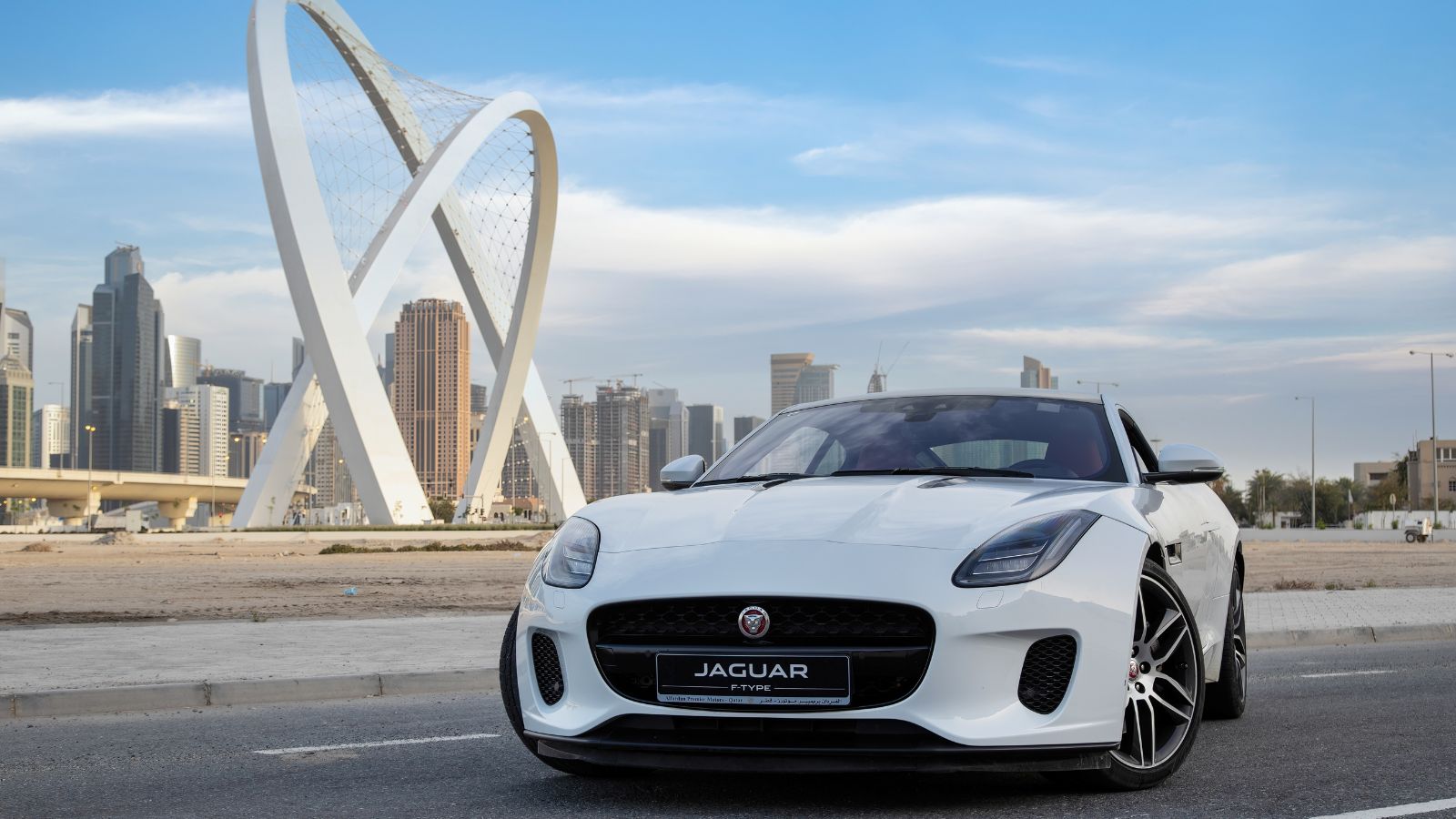
The Jaguar F-TYPE was released in 2014; some are produced in Canada. It has multiple engine options, including a 3.0-liter supercharged V6 and a 5.0-liter supercharged V8, with different power outputs. The interior includes luxury materials like leather and aluminum, a driver-centric design, and advanced infotainment systems. Depending on the engine, the F-TYPE can go from 0 to 60 mph in just 4.2 seconds, providing exhilarating performance.
Chrysler 300 (2005)
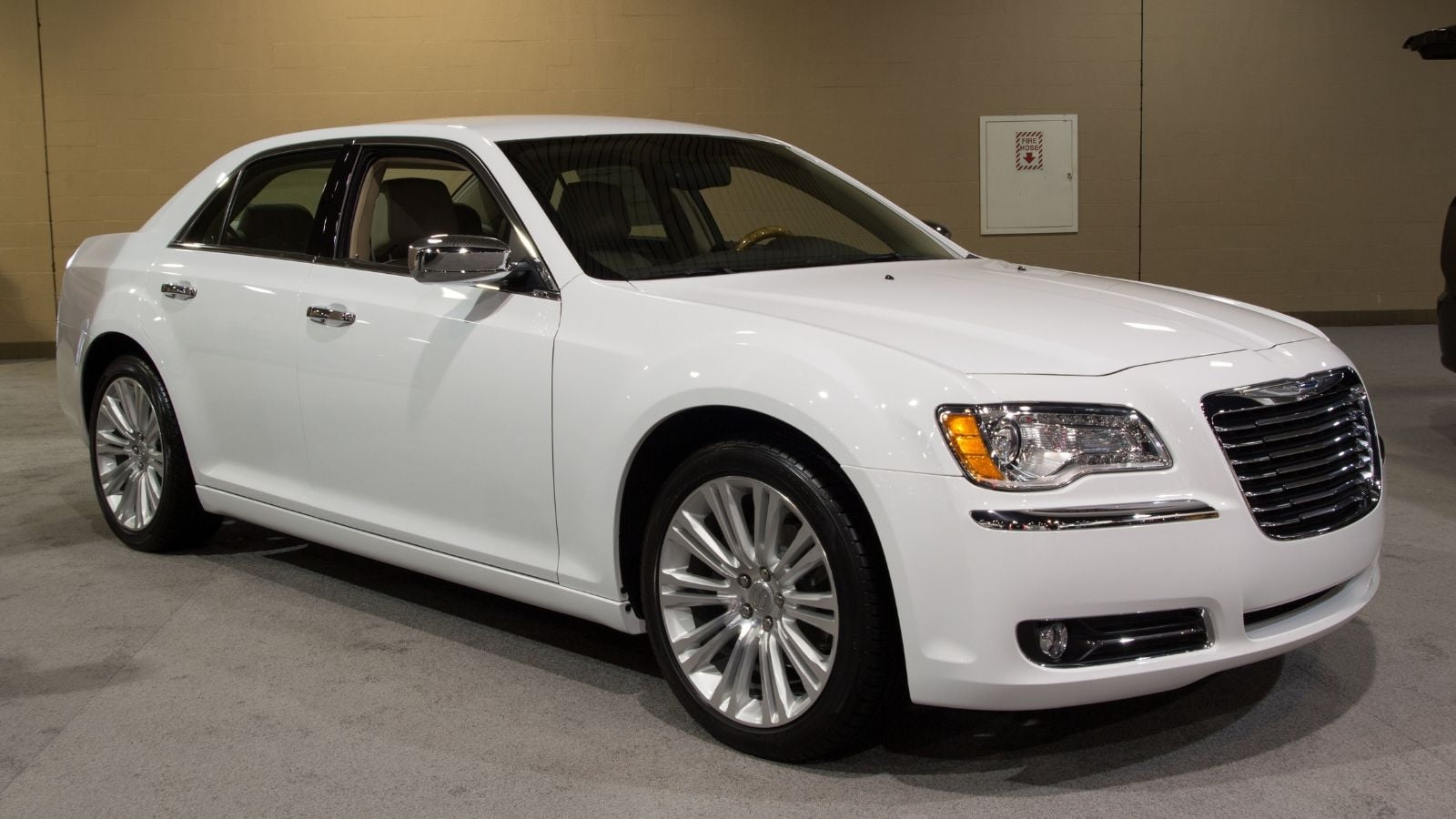
The Chrysler 300, which debuted in 2005, is a full-size sedan that marries aggressive looks with strong performance and features a variety of engines, including a 3.5-liter V6 and a 5.7-liter HEMI V8. The roomy, high-end interior has leather seating, wood trim, and an easy-to-use infotainment system. The 300C version, powered by the V8 engine, reaches 0-60 mph in about 5.3 seconds, highlighting its powerful abilities.
Dodge Charger (2006)
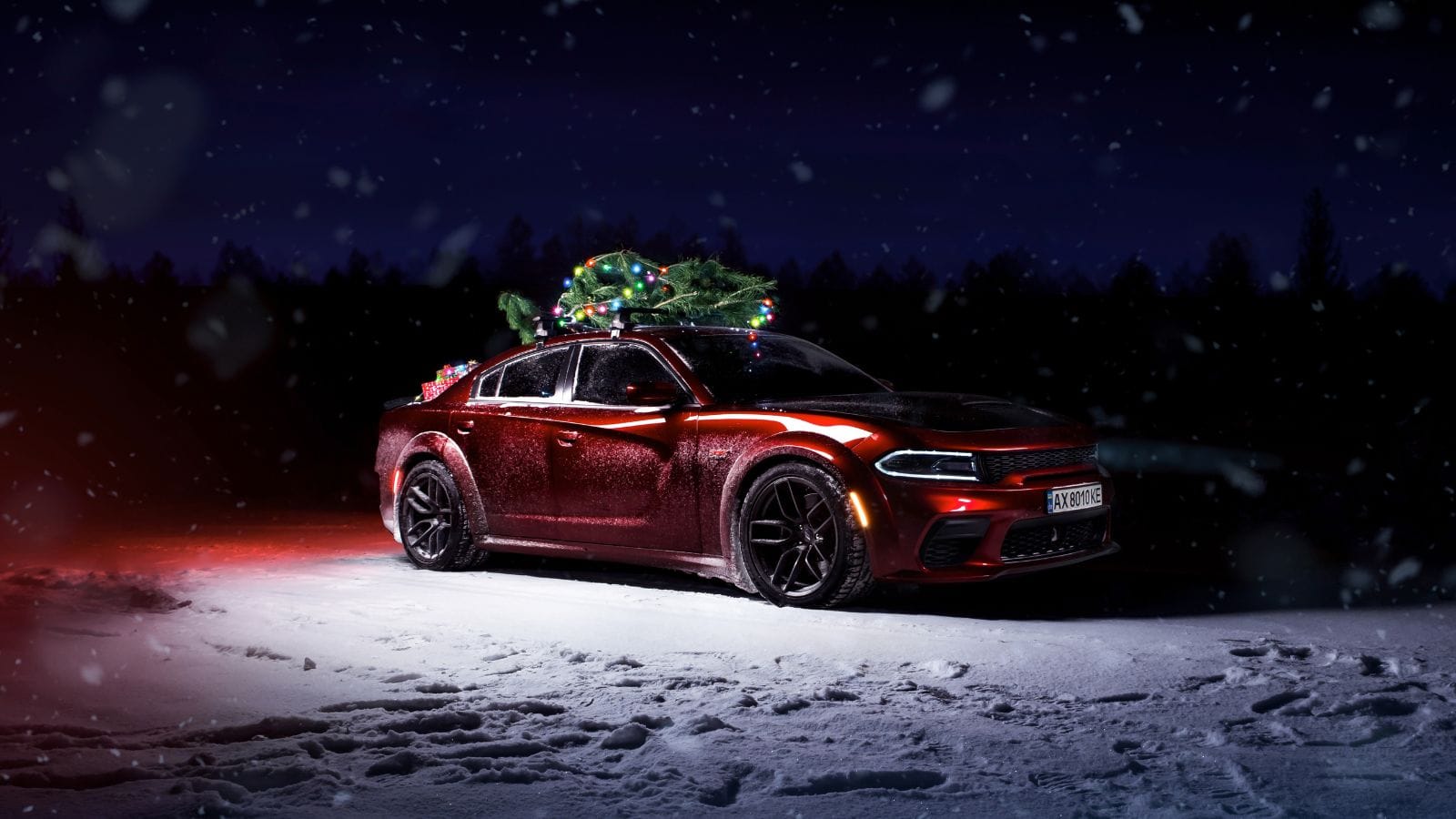
The Dodge Charger was re-introduced in 2006 as a four-door sedan with a performance bent. It features engines from a 3.5-liter V6 to a 6.1-liter HEMI V8 in the SRT8 model. The interior includes a driver-oriented cockpit with optional performance seating, a sports instrument cluster, and contemporary infotainment features. The SRT8 model has a 0 to 60 mph time of approximately 5.0 seconds, highlighting its high-performance capability.
Dodge Challenger (2008)
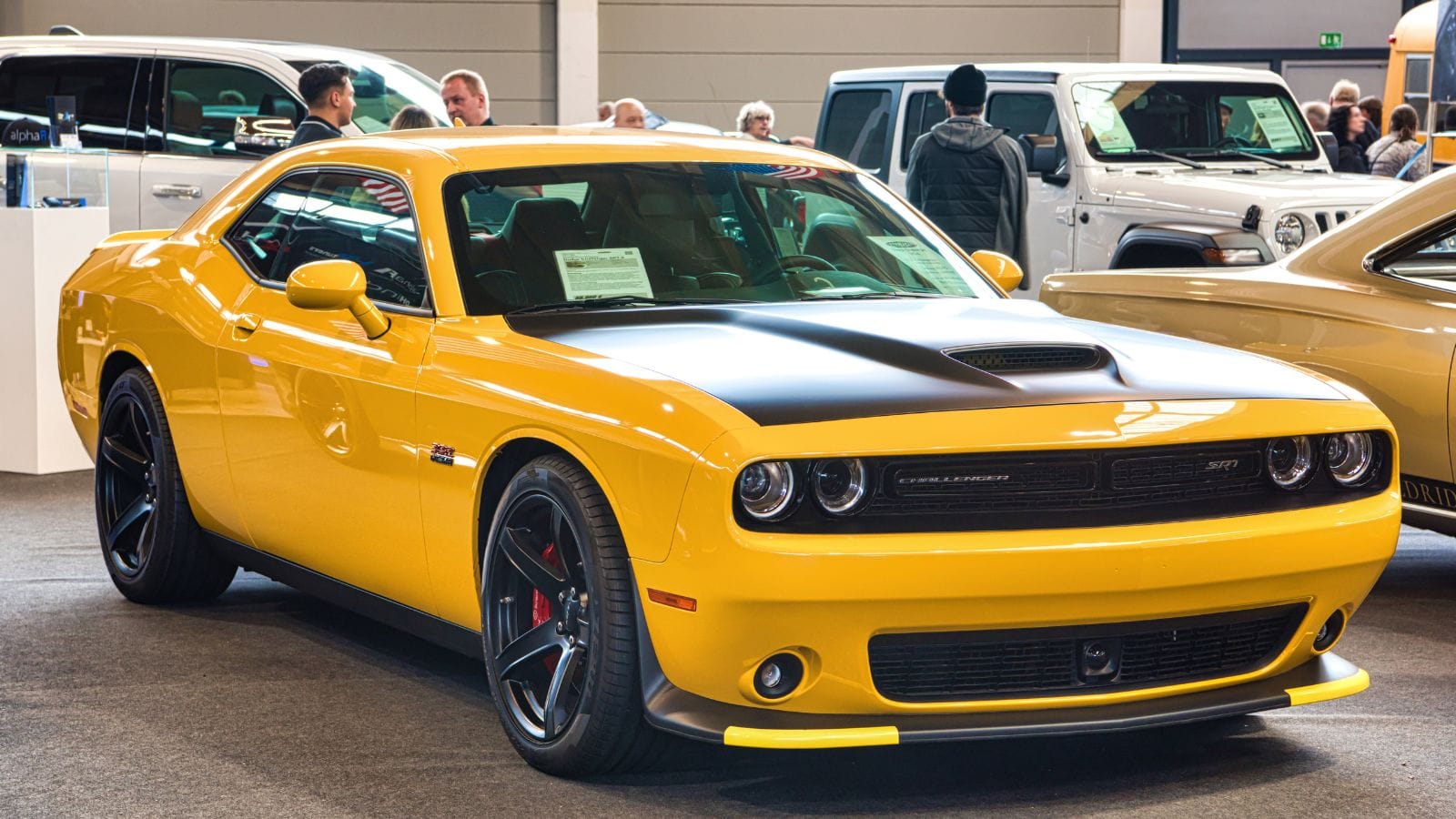
The Dodge Challenger was back in 2008 with retro-themed styling and restoring the original muscle car. It has engine options like a 3.5-liter V6 and a 6.1-liter HEMI V8 in the SRT8 model, which goes from 0 to 60 mph in about 4.8 seconds, providing exhilarating performance. The interior has a driver-focused design, optional leather seats, and a sophisticated infotainment system, combining old-school cues with new-age technology.
Chevrolet Equinox (2005)
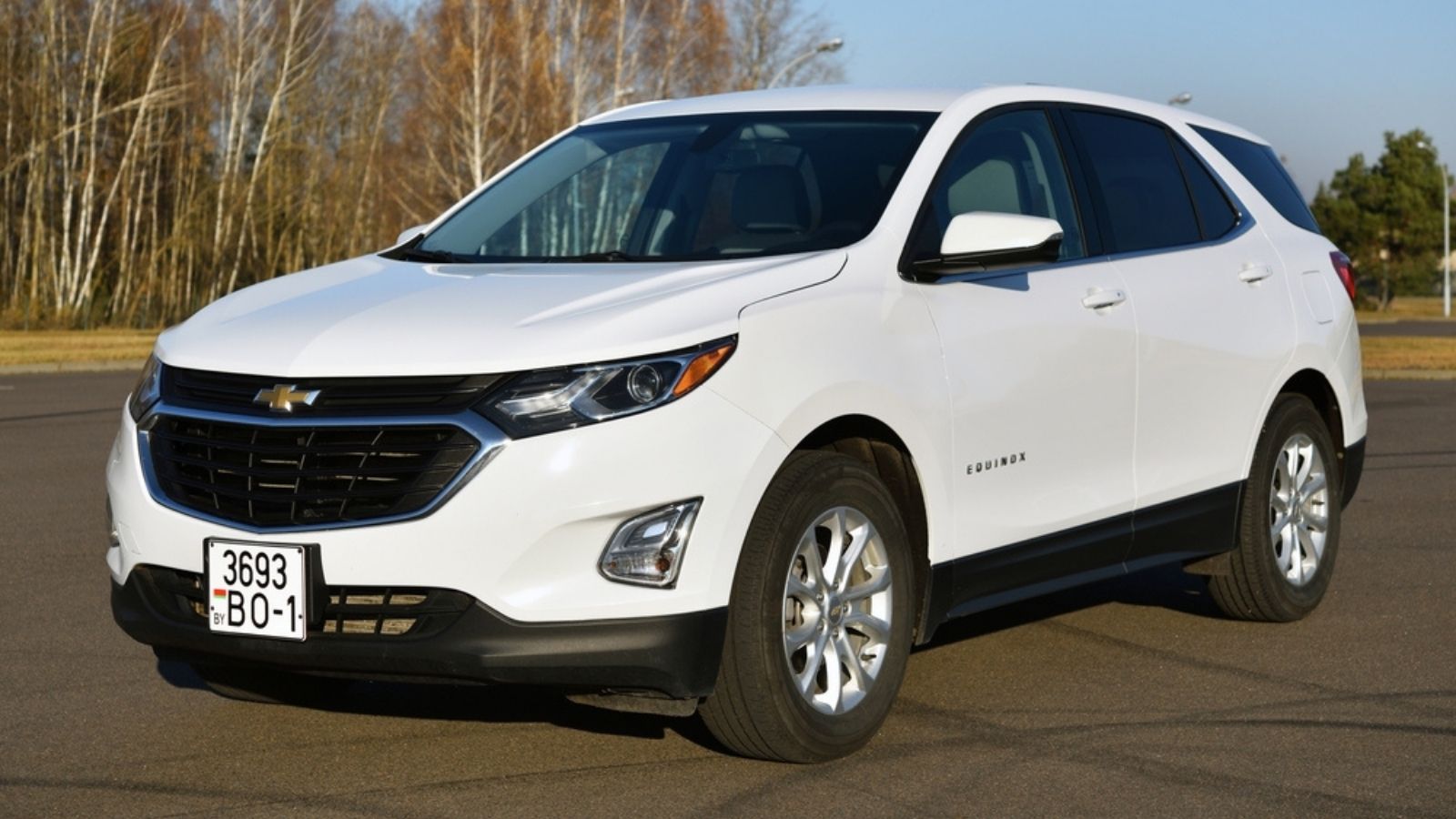
The Chevrolet Equinox was introduced in 2005. Its 2.4-liter 4-cylinder engine generates 182 horsepower and can accelerate from 0 to 60 mph in approximately 8.0 seconds, offering a combination of efficiency and comfort. The interior is roomy and comfortable, with seating for five, an easy-to-use infotainment system, and soft-touch surfaces. It has plenty of storage room and optional leather seats, making it a solid performer.
Lincoln MKT (2010)
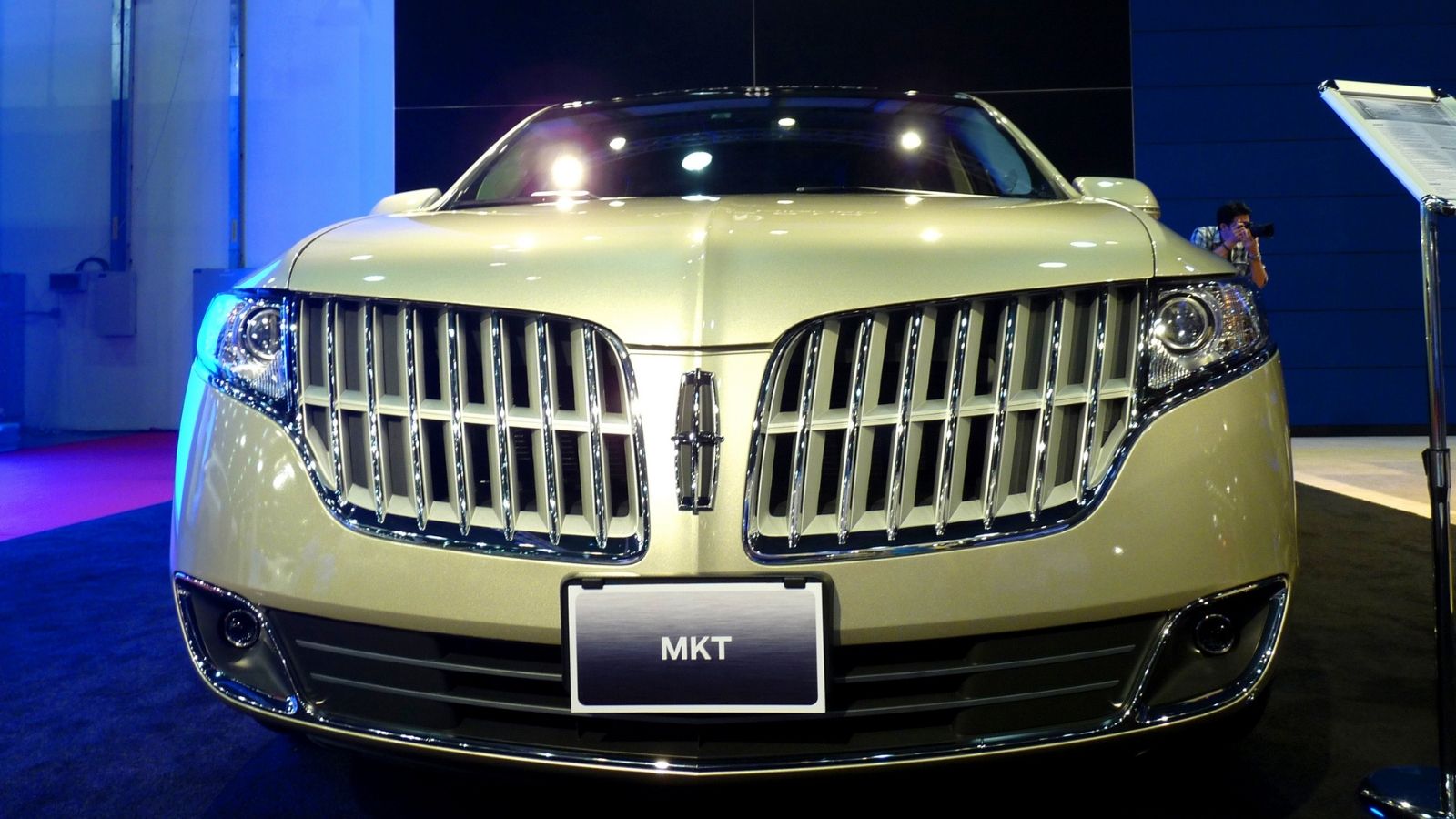
The Lincoln MKT, launched in 2010, is a luxury crossover SUV. It has a twin-turbocharged 3.5-liter V6 EcoBoost engine that churns out 365 horsepower and goes from 0 to 60 mph in about 6.3 seconds, offering a great balance of power and fuel efficiency. The inside has leather seating, wood accents, and advanced climate control features. It offers roomy seating for up to seven passengers, and the cabin is equipped with best-in-class tech.
Nissan GT-R (2017)
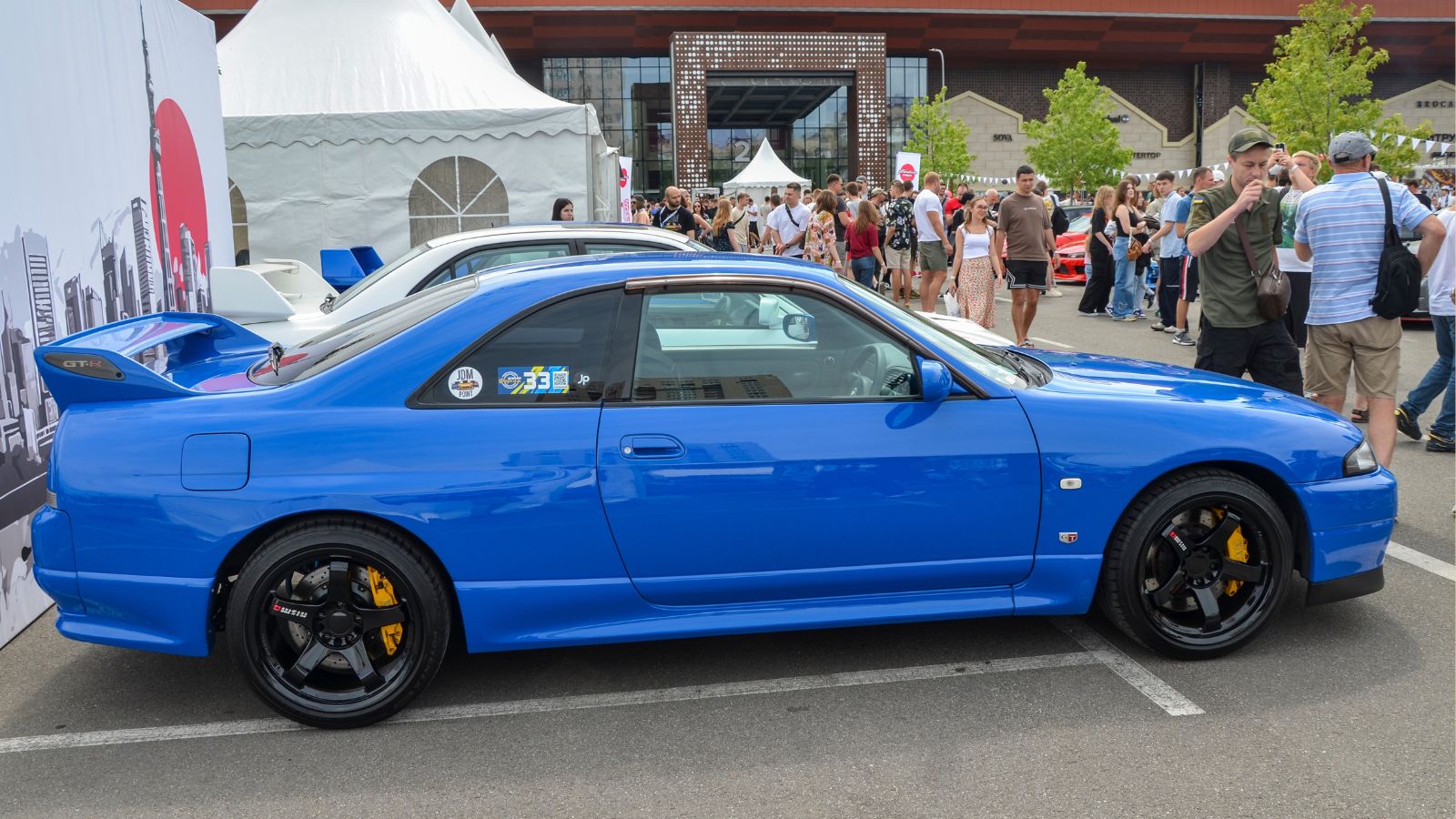
The Nissan GT-R was made in Ontario and received a major facelift in 2017 with its responsive performance and accurate handling. It features a 3.8-liter twin-turbo V6 engine, producing 565 horsepower and accelerating from 0 to 60 mph in approximately 2.9 seconds. The GT-R’s interior is functional and luxurious, with Recaro sports seats, a digital instrument cluster for critical car data, and premium materials such as leather and aluminum.
Subaru BRZ (2013)
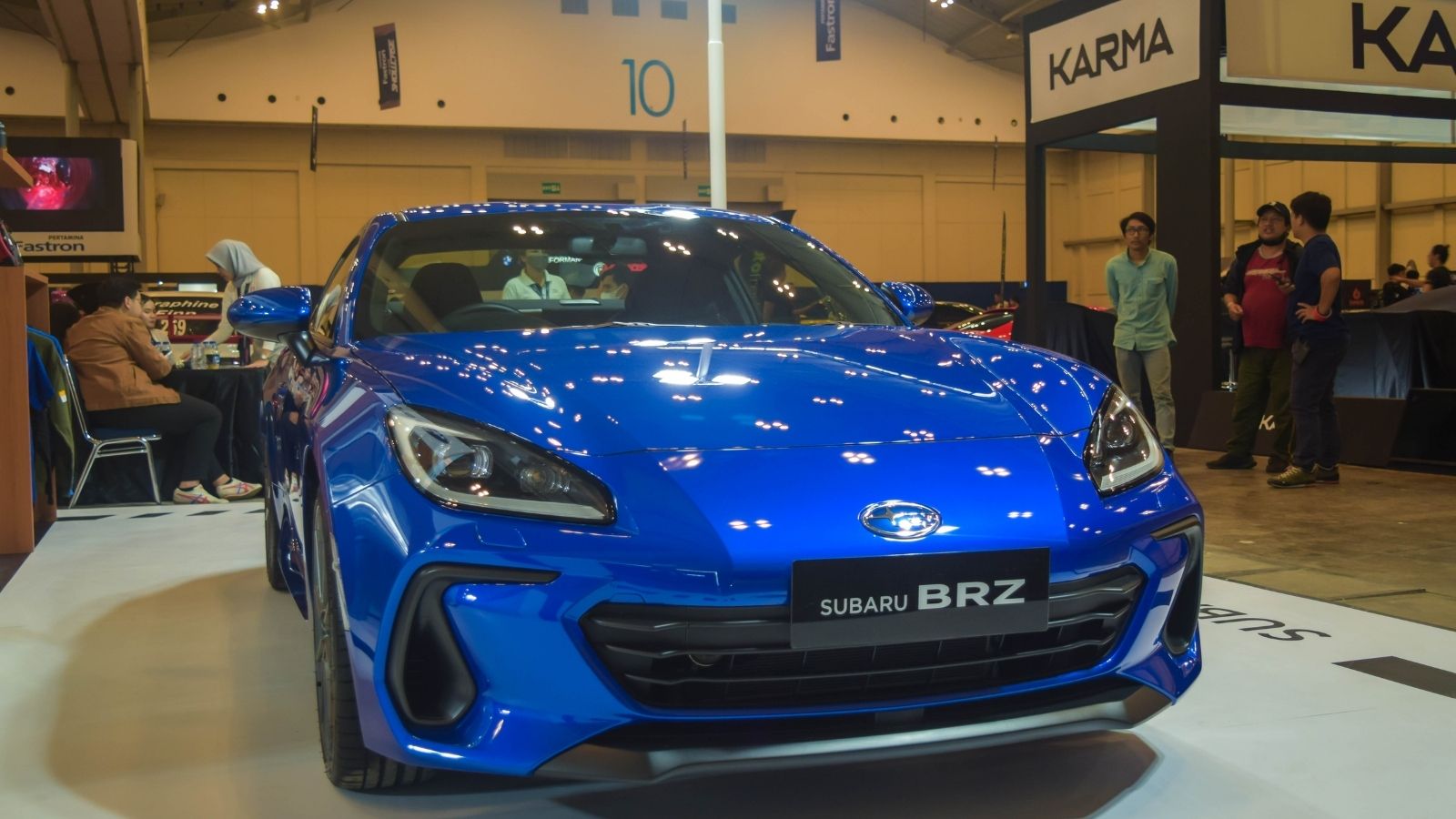
Toyota created the Subaru BRZ in cooperation with Subaru. Its design emphasizes lightweight performance and a low center of gravity. Its 2.0-liter flat-four engine offers 200 horsepower, providing performance enthusiasts with a perfect balance. The interior of the BRZ is minimal yet practical, and it has a uniquely driver-centric cockpit. The BRZ takes only 6.2 seconds to go from 0 to 60 mph.
Honda Civic Type R (2017)
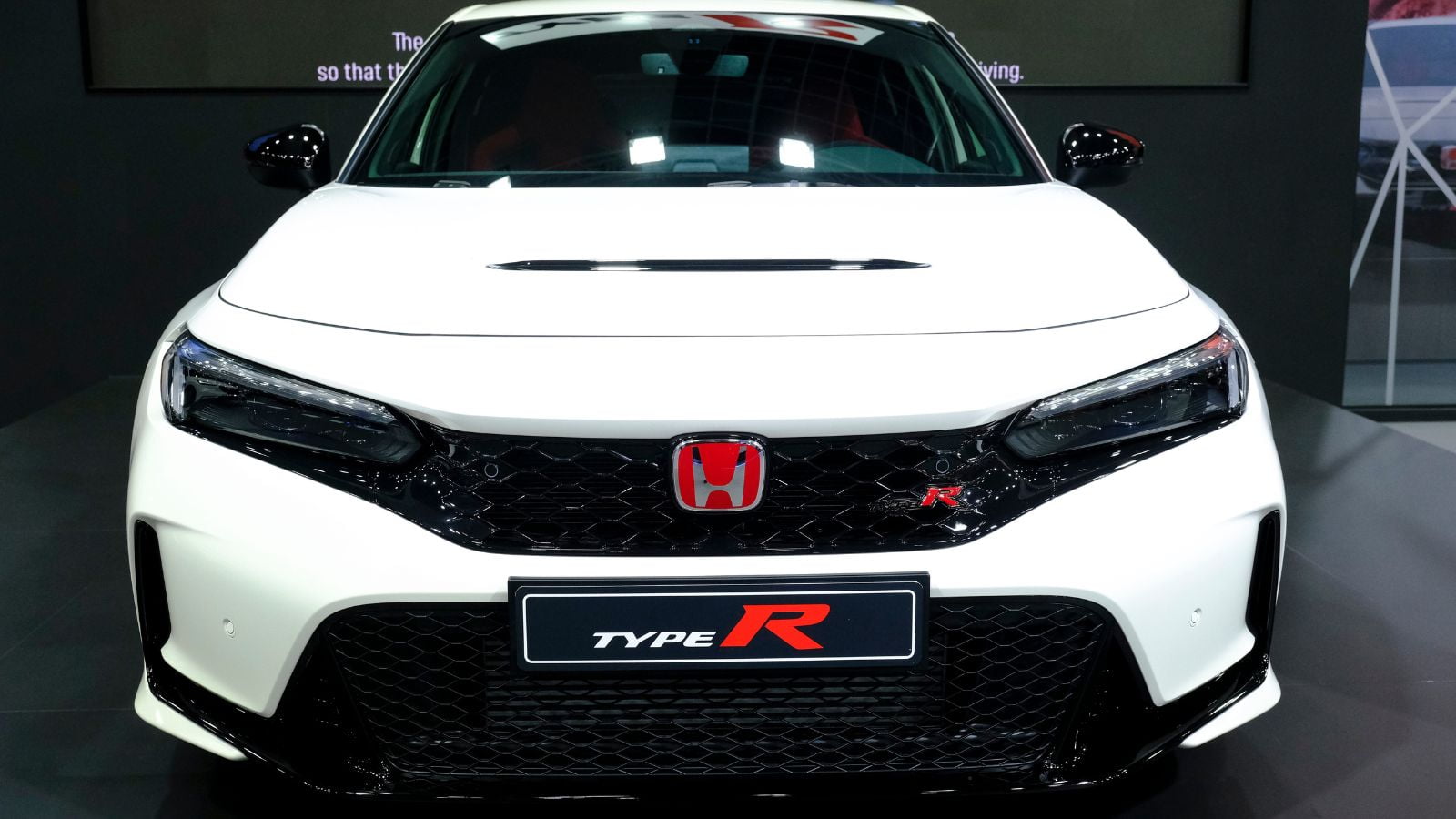
The 2017 Honda Civic Type R, manufactured in Ontario, delivers high-performance hatchback handling to a daily driver vehicle. It features a turbocharged 2.0-liter 4-cylinder engine producing 306 horsepower and records a 0 to 60 mph of only 5.7 seconds, making it one of the quickest front-wheel-drive hatchbacks. Inside, the Civic Type R has a driver-focused cabin with bucket seats, a race-inspired gear lever, and a dash of sportiness.
Lexus RX 350 (2006)
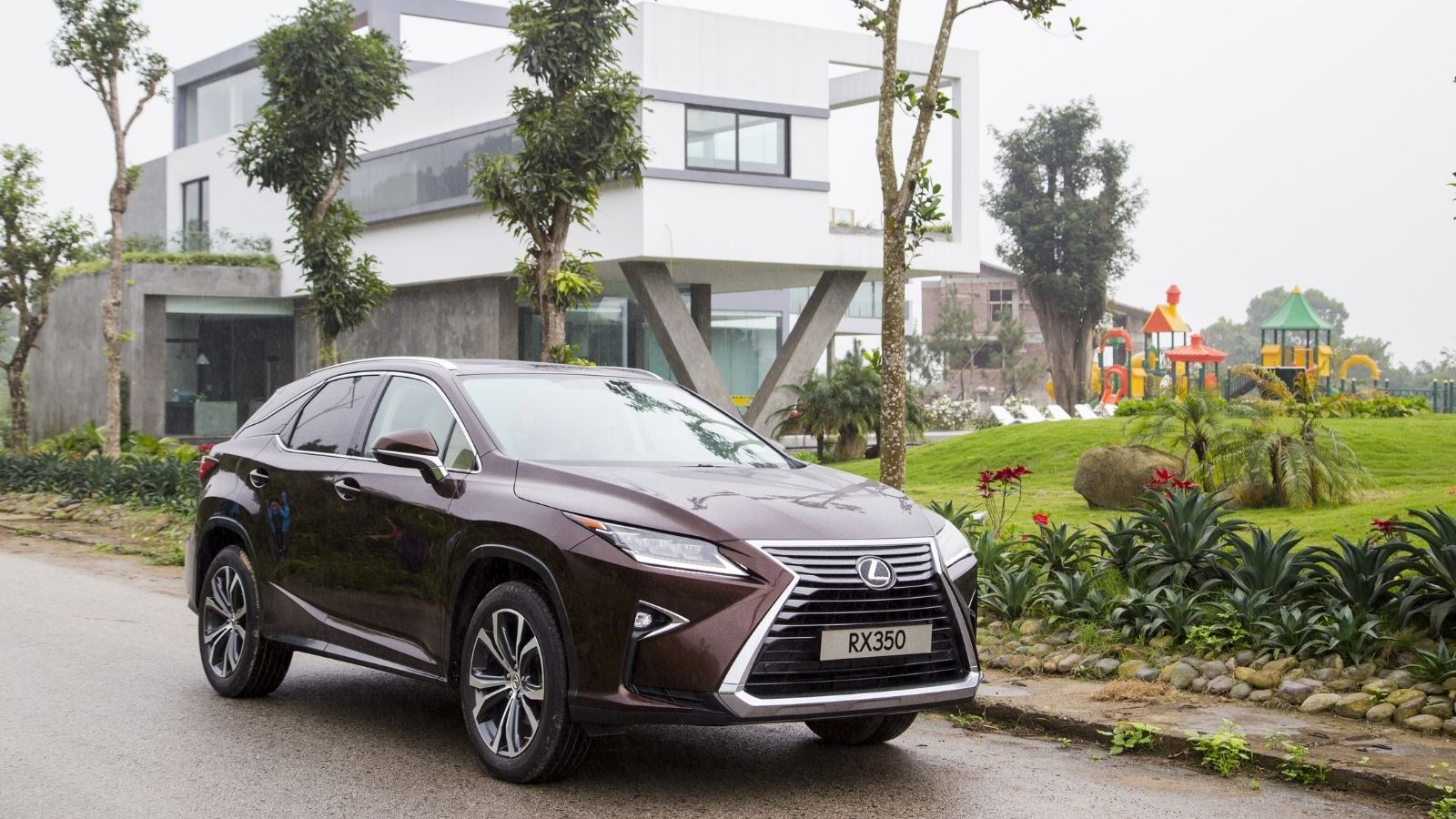
Produced in 2006, the Lexus RX 350 is a mid-level luxury crossover model. Its engine in the hood has a 3.5-liter V6 motor producing 275 horsepower that provides a 0 to 60 mph acceleration time of 7.7 seconds. It has luxurious interiors like leather seating, a top-notch sound system, and an enormous touchscreen infotainment screen.
Toyota Highlander (2001)
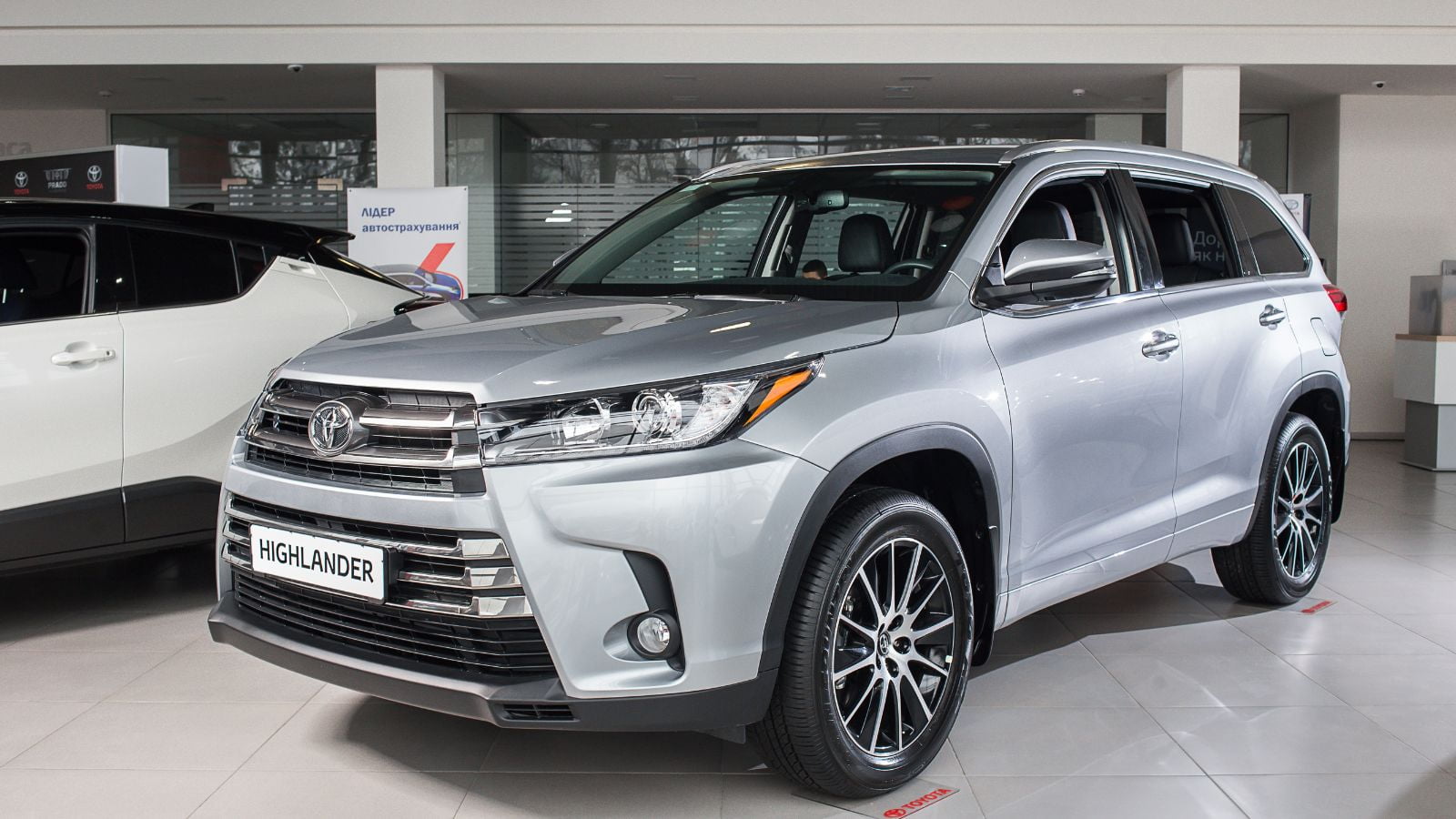
The Toyota Highlander was introduced in 2001 as Toyota entered the world of mid-size crossover SUVs. It has a 3.5-liter V6 engine makes 295 horses and goes from 0 to 60 mph in 7.2 seconds, providing smooth and reliable transportation. The Highlander’s interior includes three rows of seats, an intuitive infotainment system, and premium upholstery that balances family-oriented features with functionality and luxury.
Cadillac ATS (2013)
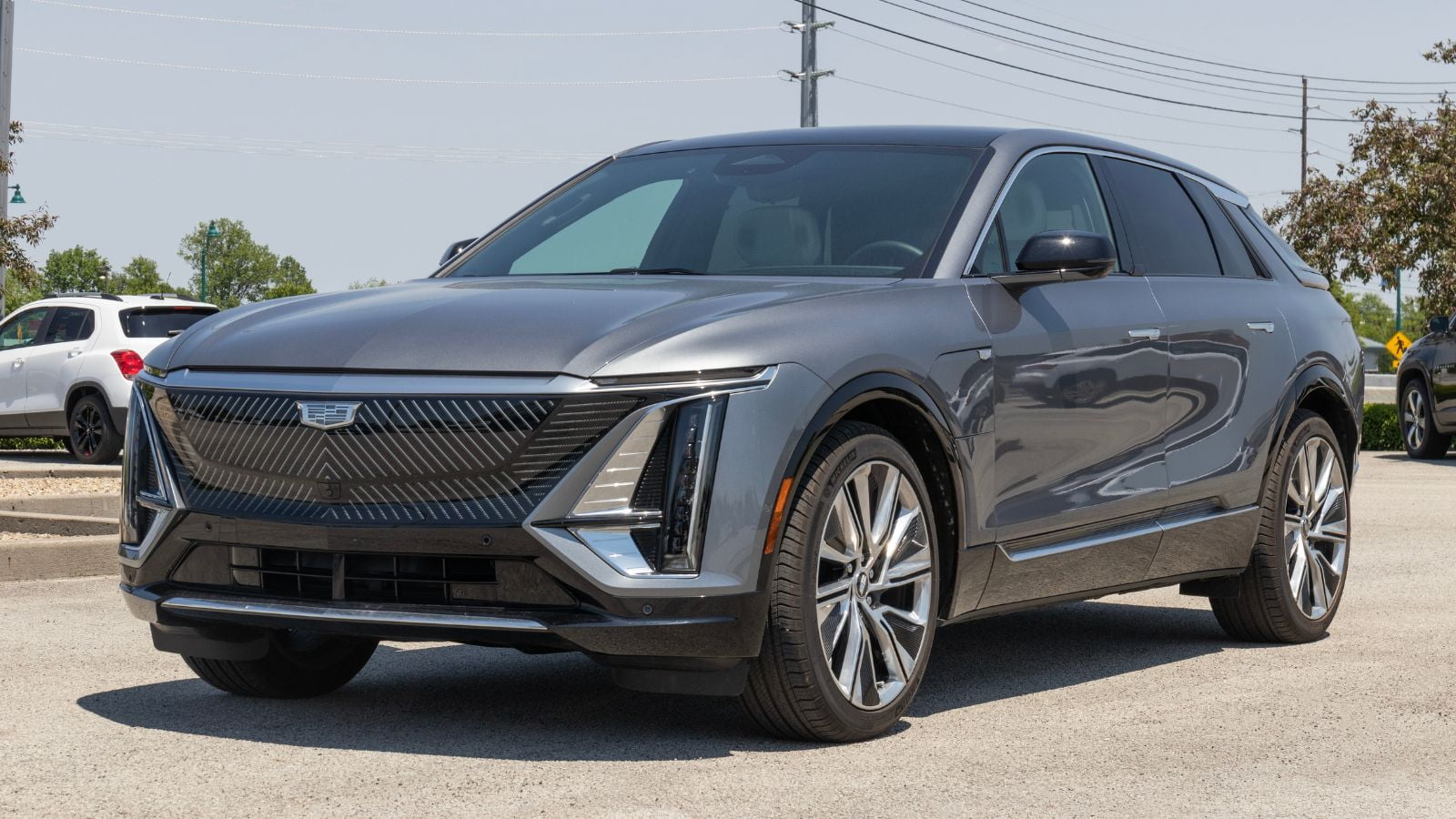
The Cadillac ATS is a compact luxury sedan introduced in 2013. It has a turbocharged 2.5-liter four-cylinder produces 202 horsepower and more powerful V6 options. The interior has a cockpit centered on the driver, premium leather seats, and a high-tech infotainment system. Its 0 to 60 mph acceleration time of 5.7 seconds makes it a strong contender in the luxury sedan segment.
Ford Focus RS (2016)
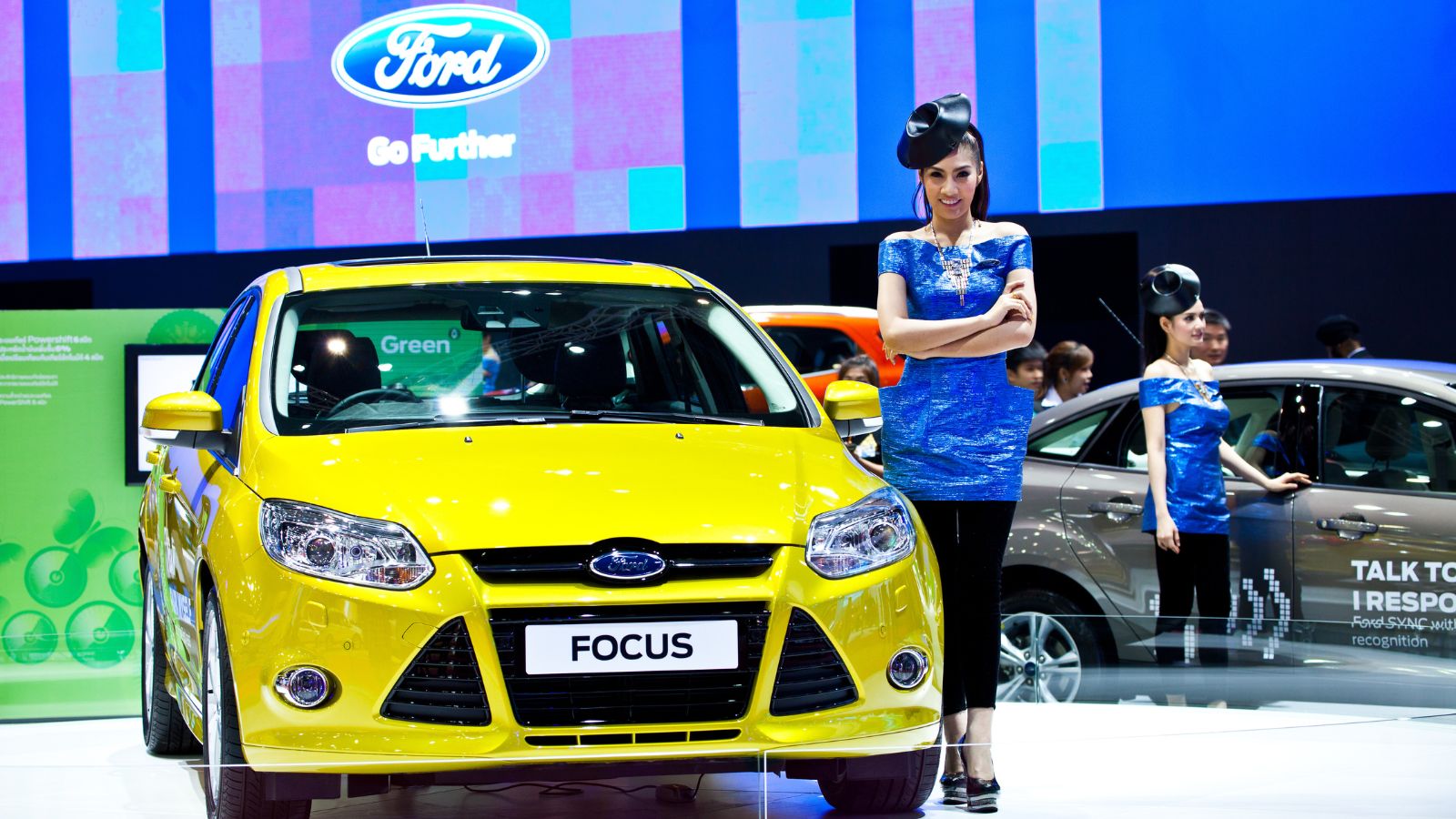
The Ford Performance division designed the 2016 Ford Focus RS, a 2.3-liter turbocharged four-cylinder engine that delivers 350 horsepower. The interior has sports seats inspired by the track, a multifunction steering wheel, and an intuitive infotainment system, combining a sporty and functional look. The vehicle’s handling is impeccable, and it goes from 0 to 60 mph in a mere 4.6 seconds, cementing its reputation as a hot hatch.
Chrysler Pacifica (2017)
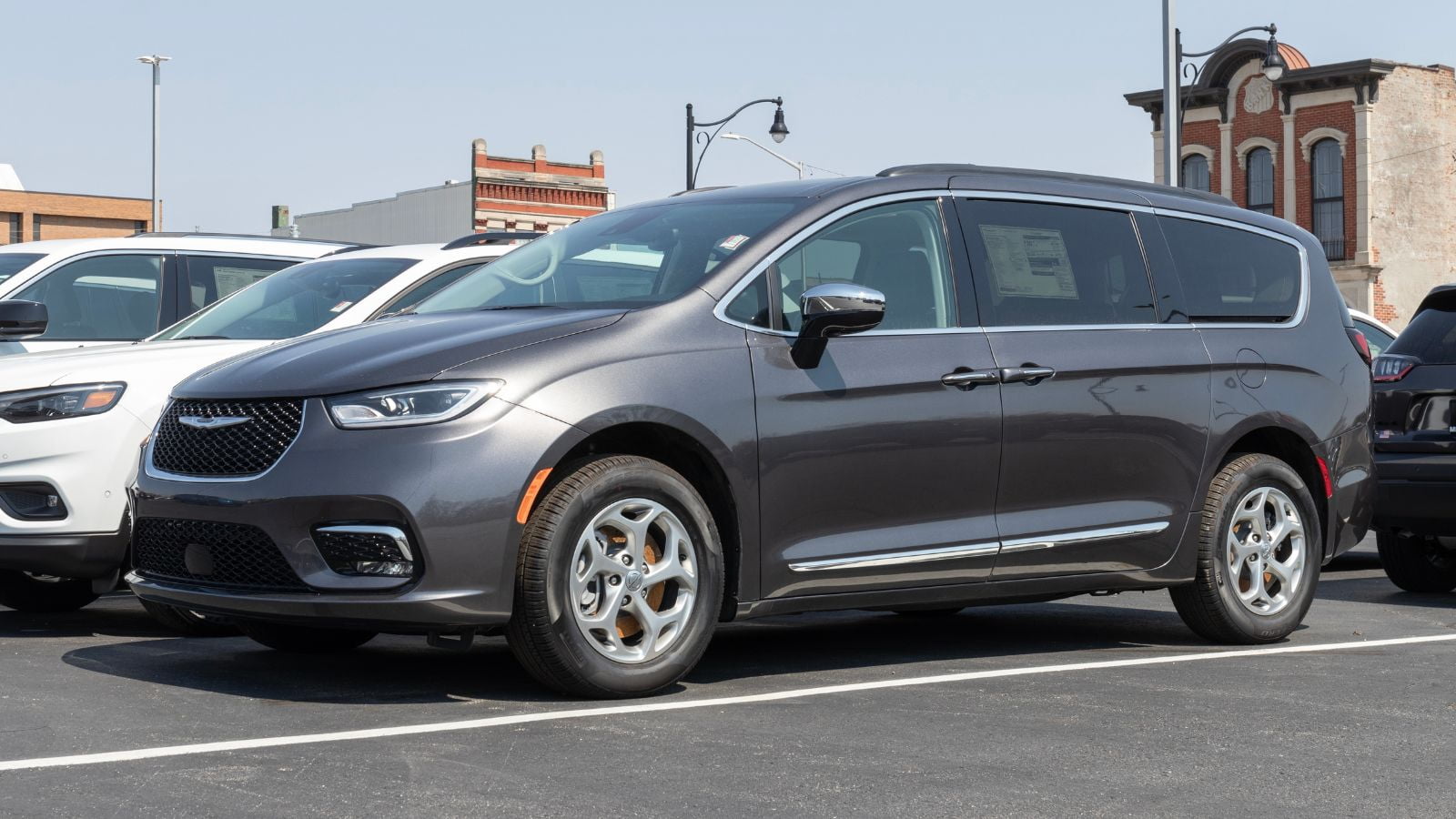
The Chrysler Pacifica was released in 2017. It is a minivan that combines family-friendly amenities with contemporary technology. Its 3.6-liter V6 engine delivers 287 horsepower and accelerates from 0 to 60 mph in approximately 7.3 seconds, providing fast acceleration for its segment.
Infiniti QX60 (2013)
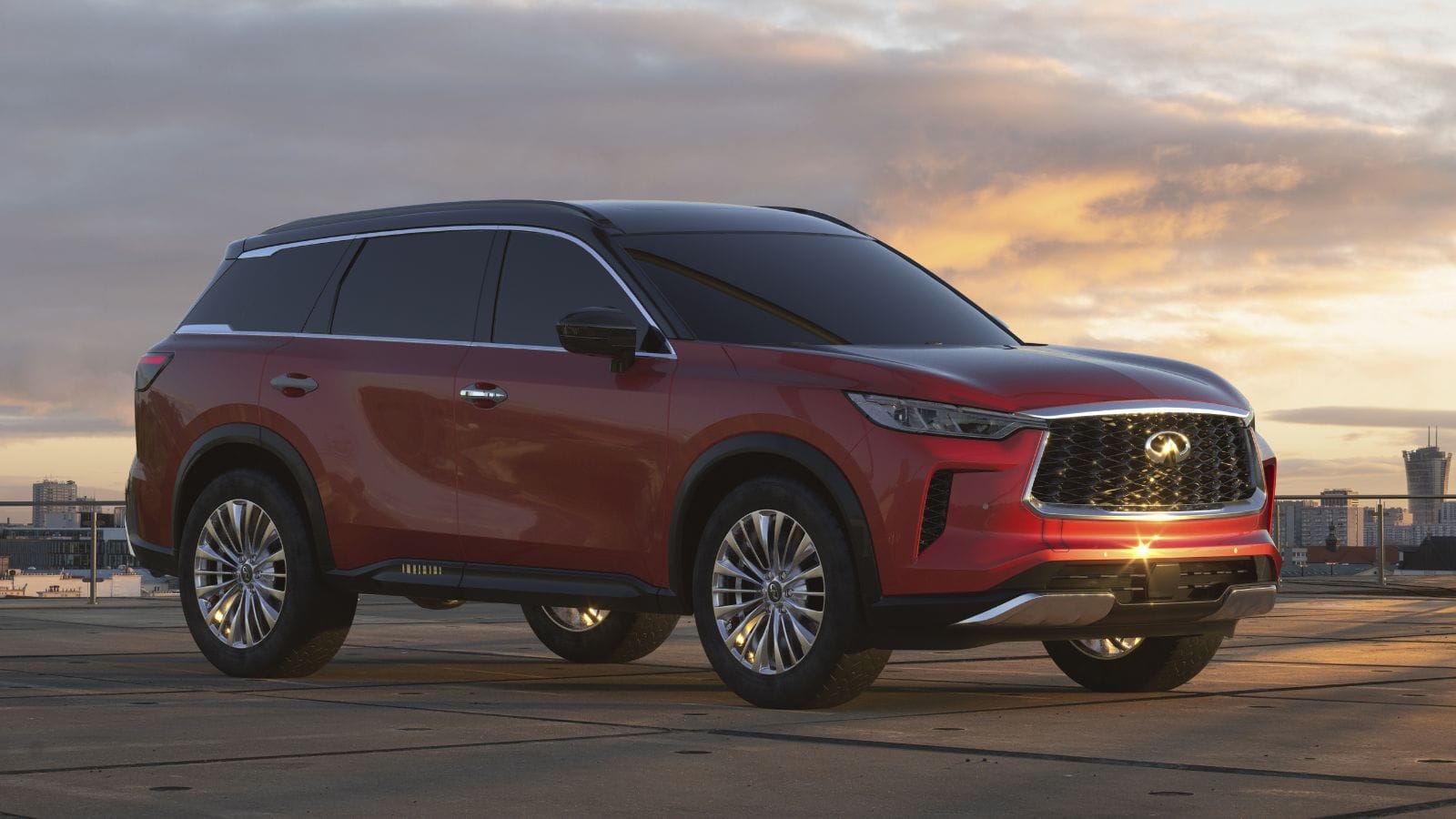
The 2013 Infiniti QX60 is a luxury crossover SUV. Equipped with a 3.5-liter V6 engine making 295 horsepower, the QX60 has plenty of power given its size. The interior has a high-end cabin with leather seats, innovative safety features, and a spacious third row. The QX60 sprints from 0 to 60 mph in 7.3 seconds, offering performance and luxury. It remains a top choice for families seeking comfort and sophistication, offering a smooth ride and advanced tech features.
GMC Canyon (2015)
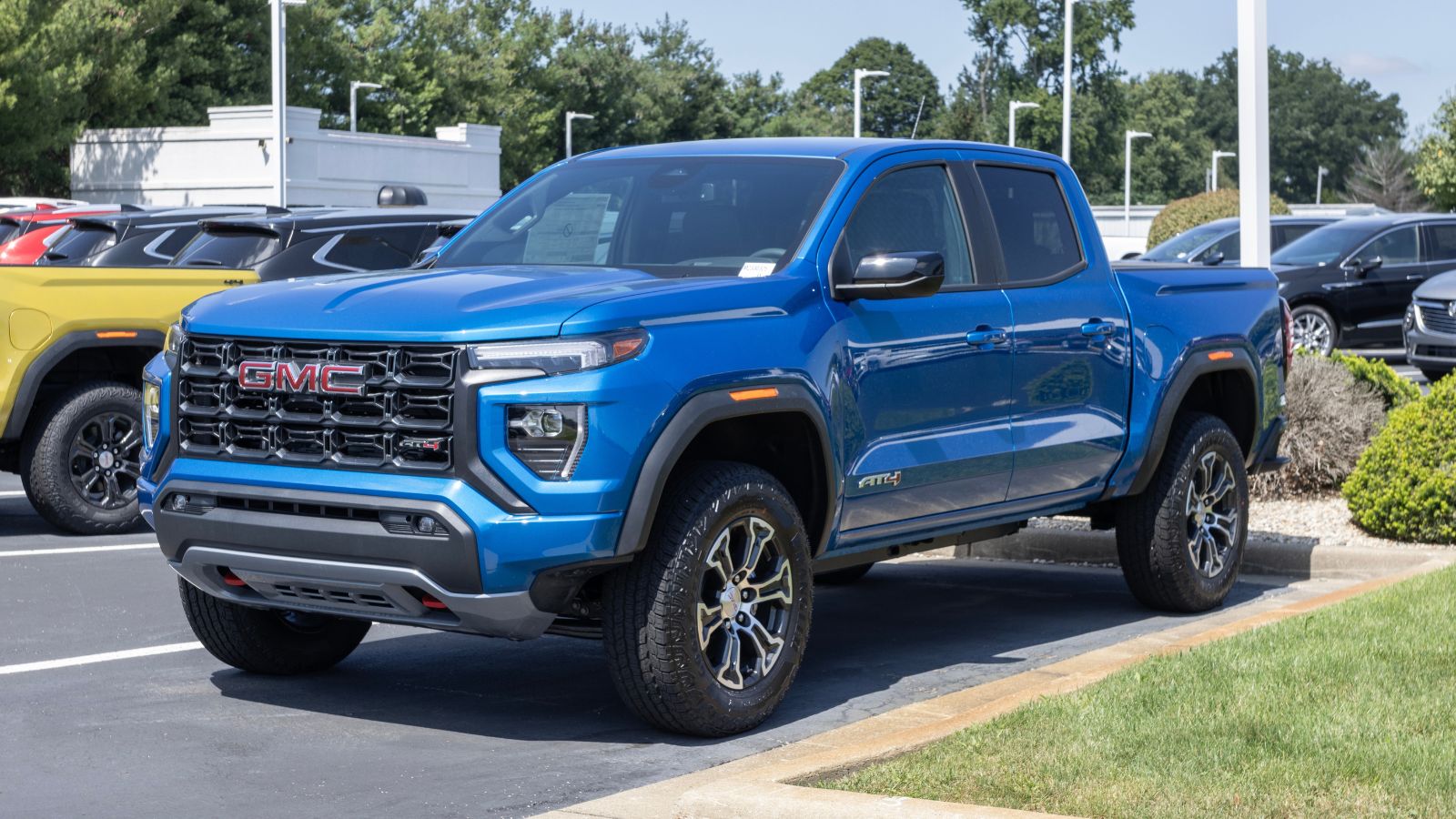
Released in 2015, the GMC Canyon is a mid-size pickup truck meant to provide aggressive capability and comfort. It comes with a 3.6-liter V6 engine with 308 horsepower that accelerates from 0 to 60 mph in around 7.0 seconds, which is a well-done performer in the mid-size truck segment. The interior has tough seating, high-tech functionality, and a utilitarian design, providing a blend of practicality and comfort.
Dodge Durango (2011)
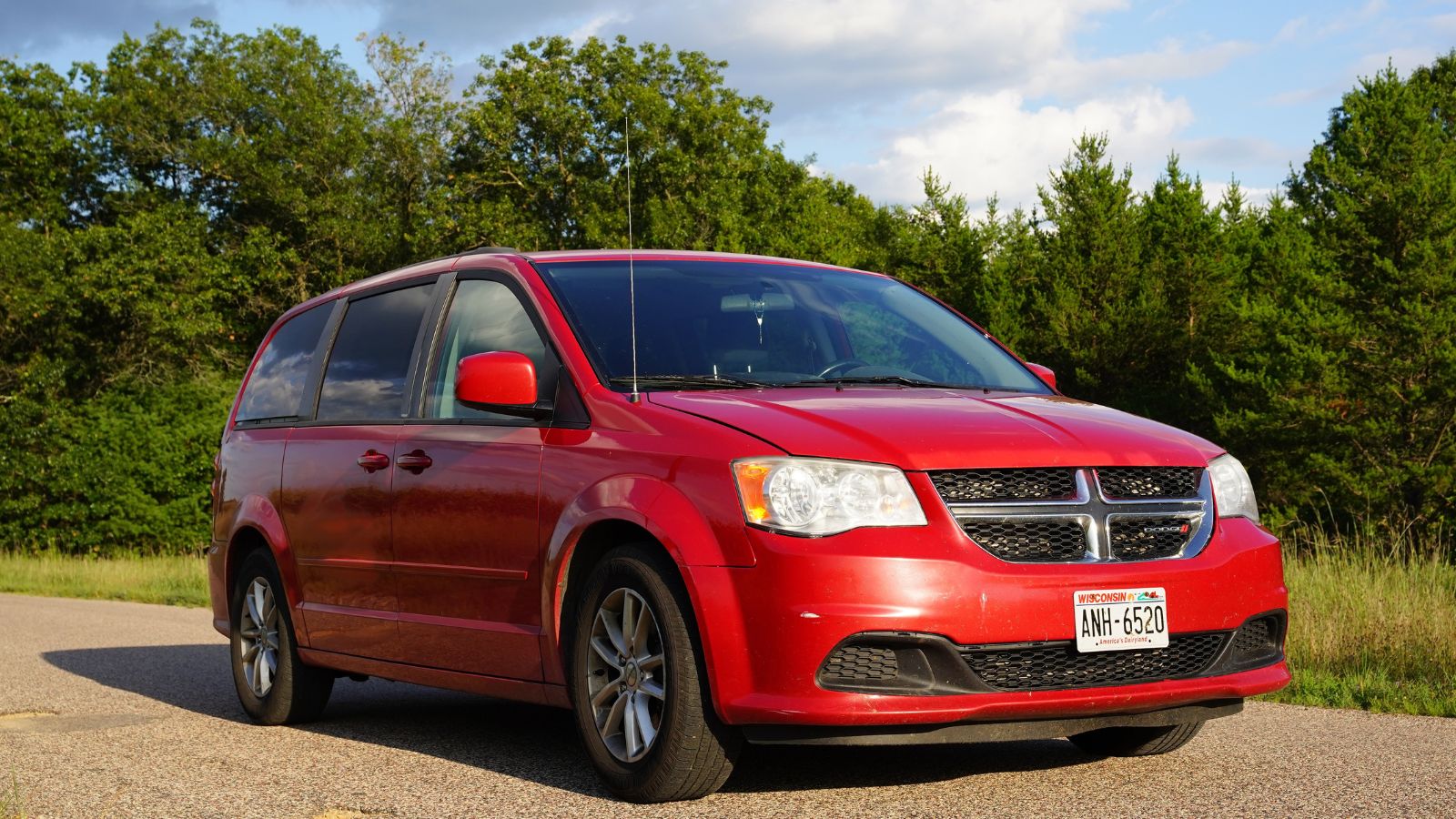
The 2011 Dodge Durango is a full-size sport utility vehicle. It comes with several engine options, including a 5.7-liter V8 engine that makes 360 horsepower and takes around 6.0 seconds to go from 0 to 60 mph. The interior has three rows of seating and plenty of space, and it is trimmed with quality materials and an easy-to-use infotainment system, providing owners with a tough and functional vehicle.
Hyundai Santa Fe (2001)
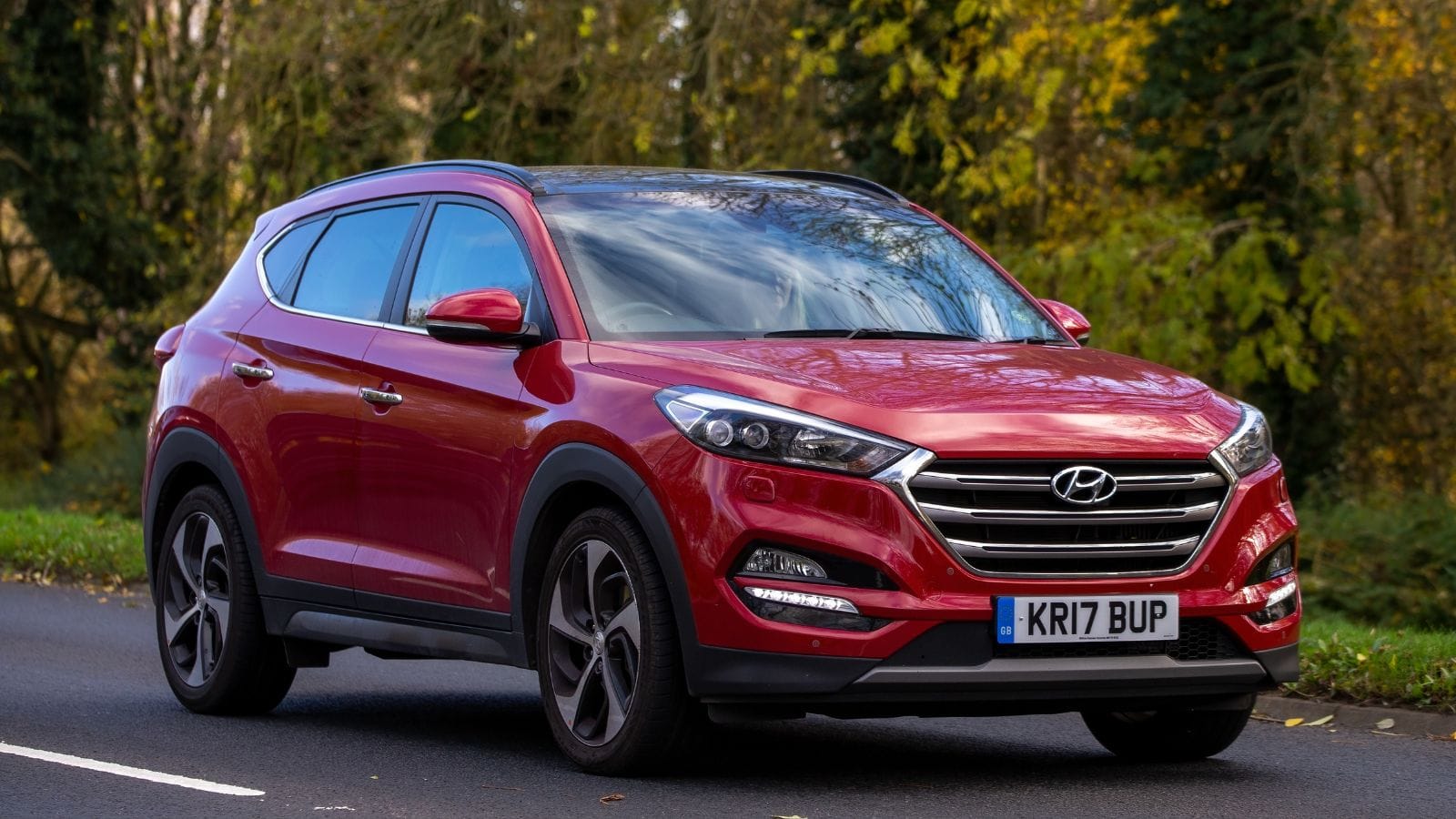
The Hyundai Santa Fe, introduced in 2001, is a mid-size crossover SUV. Its 2.4-liter four-cylinder engine produces 185 horsepower and provides an even ride. The interior has ample cargo space, supportive seats, and an easy-to-use infotainment system. The Santa Fe goes from 0 to 60 mph in 8.5 seconds, with a smooth ride and enough power for daily driving.
Toyota Tacoma (2005)
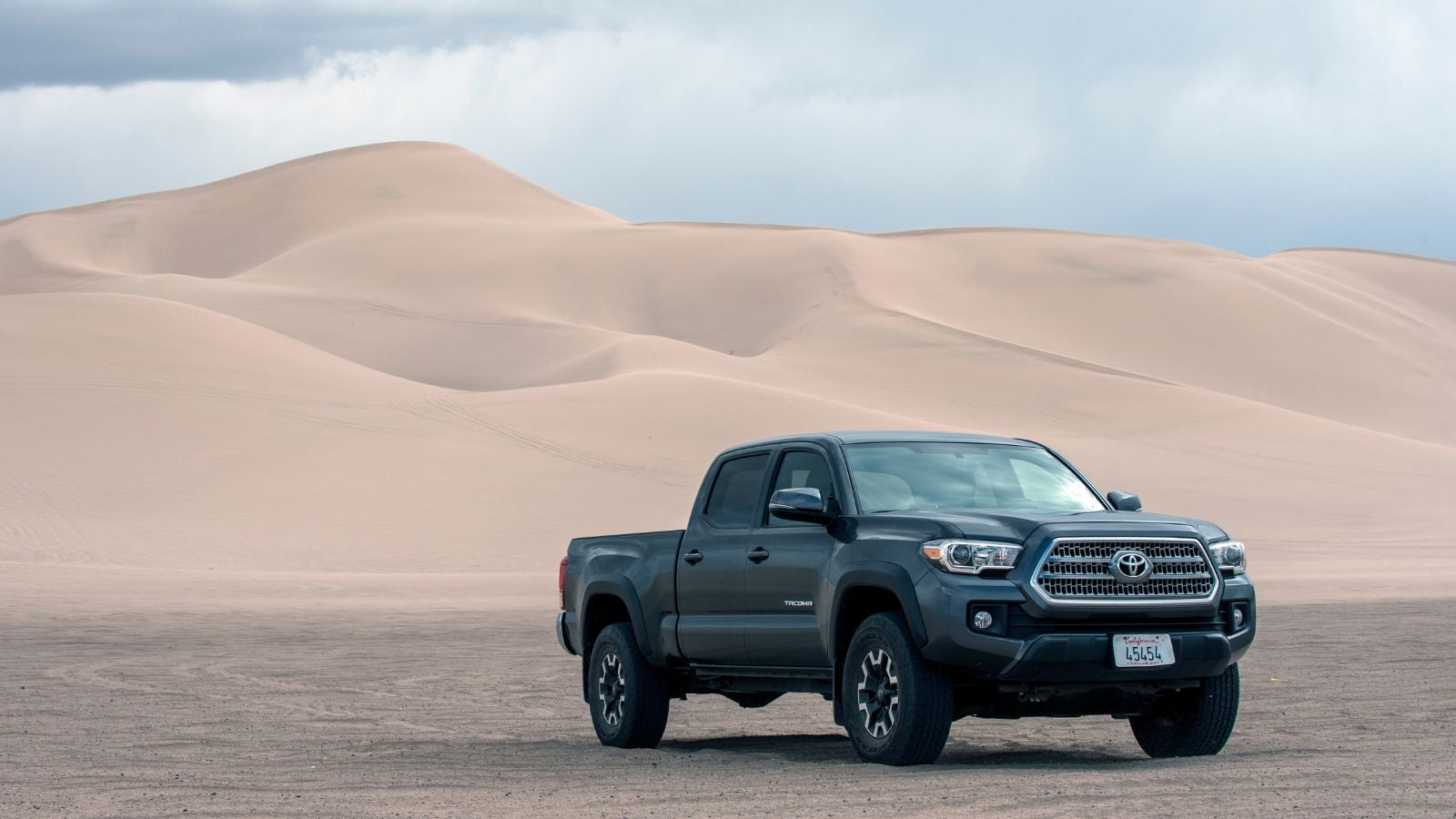
Initially launched in 2005, the Toyota Tacoma is a small pickup truck by Akio Toyoda. It has a 3.5-liter V6 engine that can produce 278 horsepower. The interior is plain and crafted for durability using quality materials and a minimal design. The Tacoma’s acceleration from 0 to 60 mph is about 6.5 seconds, showing its robustness and dependability.
Honda CR-V (1995)
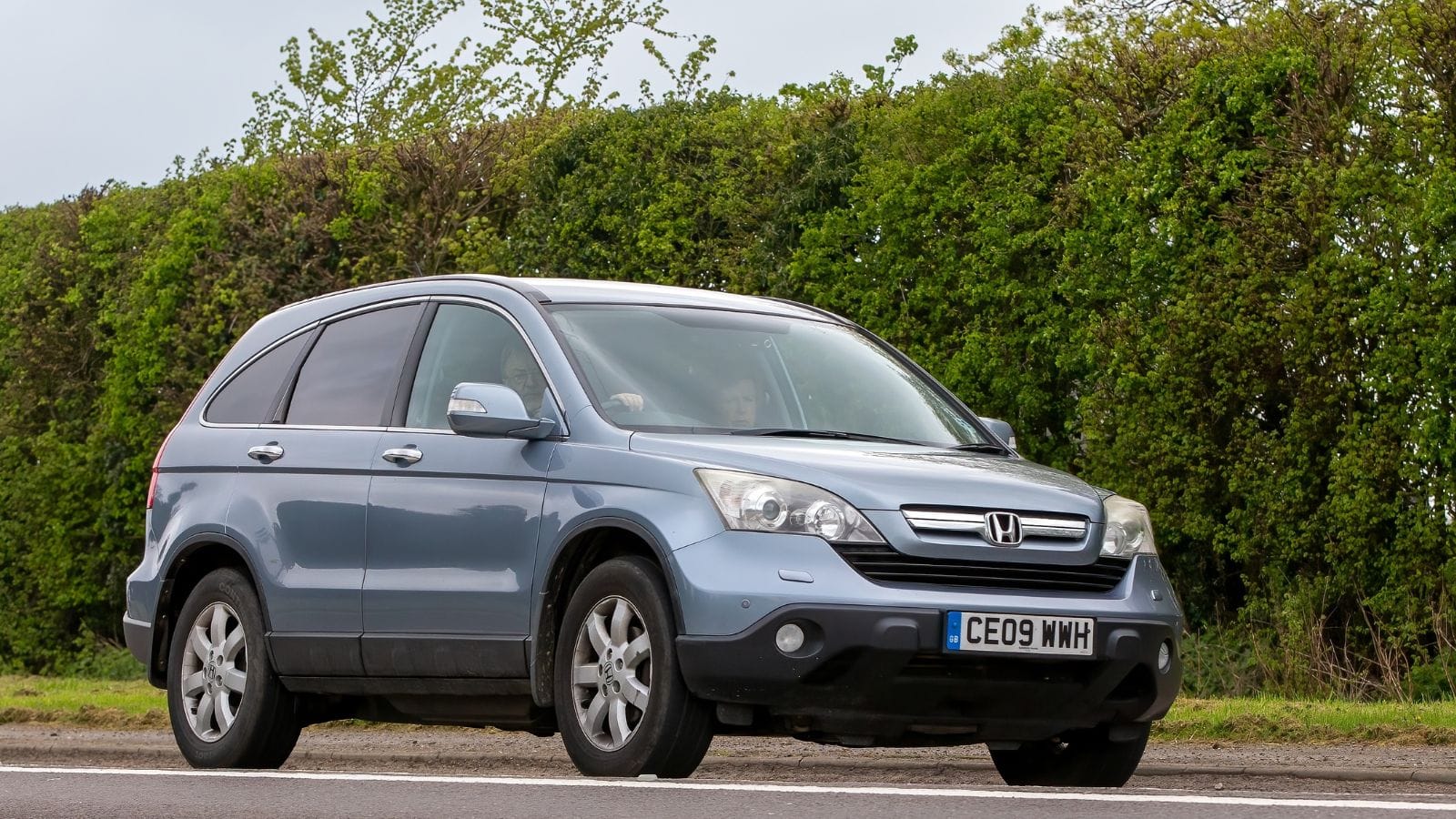
The Honda CR-V, introduced in 1995, is a practical and efficient compact SUV. It features a 1.5-liter turbocharged engine producing 190 horsepower and accelerating from 0 to 60 mph in 7.6 seconds. The ride is silky and responsive. The interior of the CR-V is spacious, with excellent materials and a simple, intuitive layout that ensures a proper blend of efficiency and performance.
BMW 3 Series (1982)
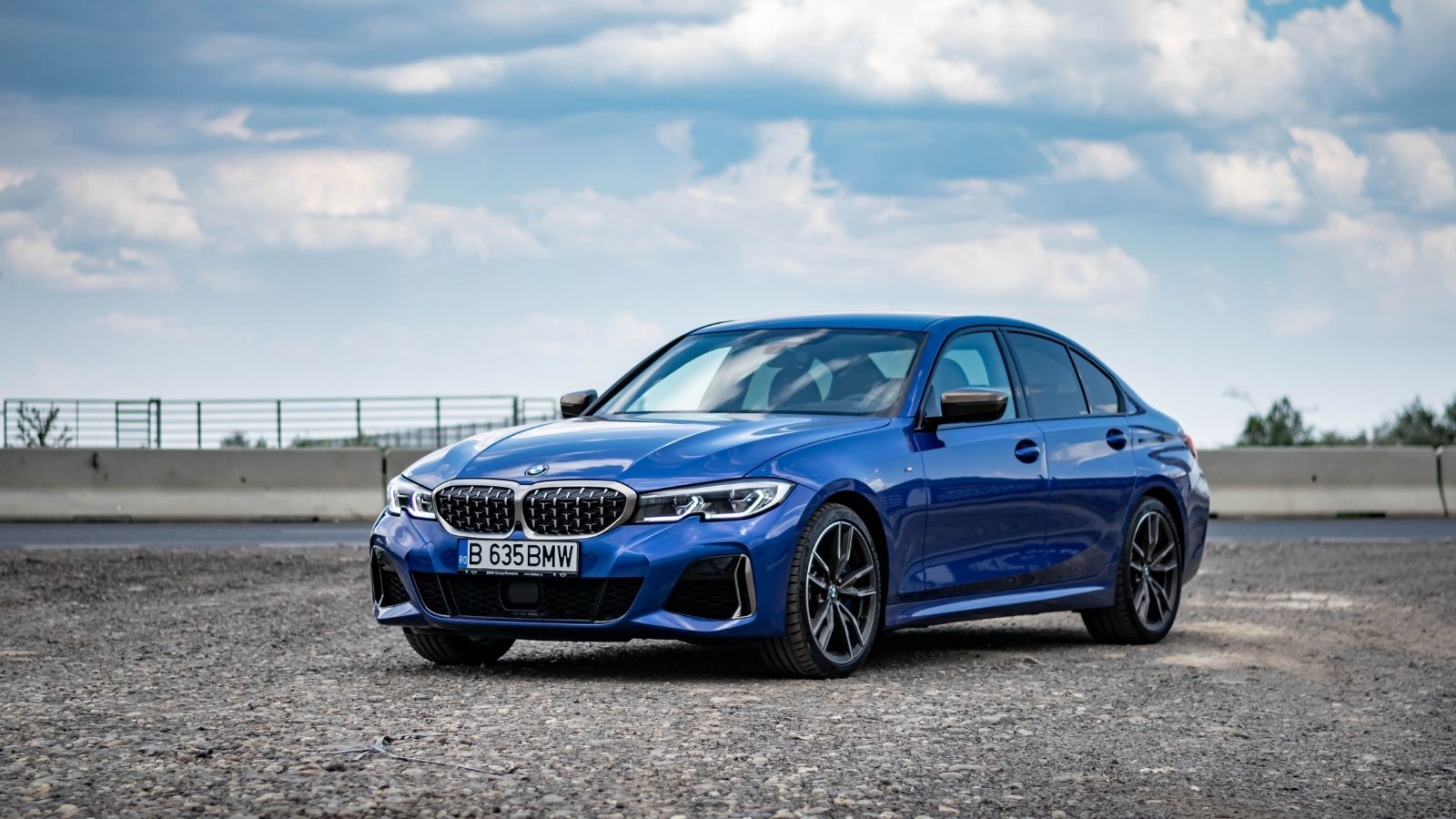
Paul Bracq designed the BMW 3 Series, which was initially launched in 1982. It is a luxury compact sedan that has become a legend among driving enthusiasts. The 3 Series has various engines, such as a 2.0-liter turbocharged four-banger producing 255 horsepower. It can go from 0 to 60 mph in 5.6 seconds, combining razor-sharp handling with smooth performance.
18 Budget-Friendly Electric Cars That Last Longer Than Their Loans — Economical Electrics
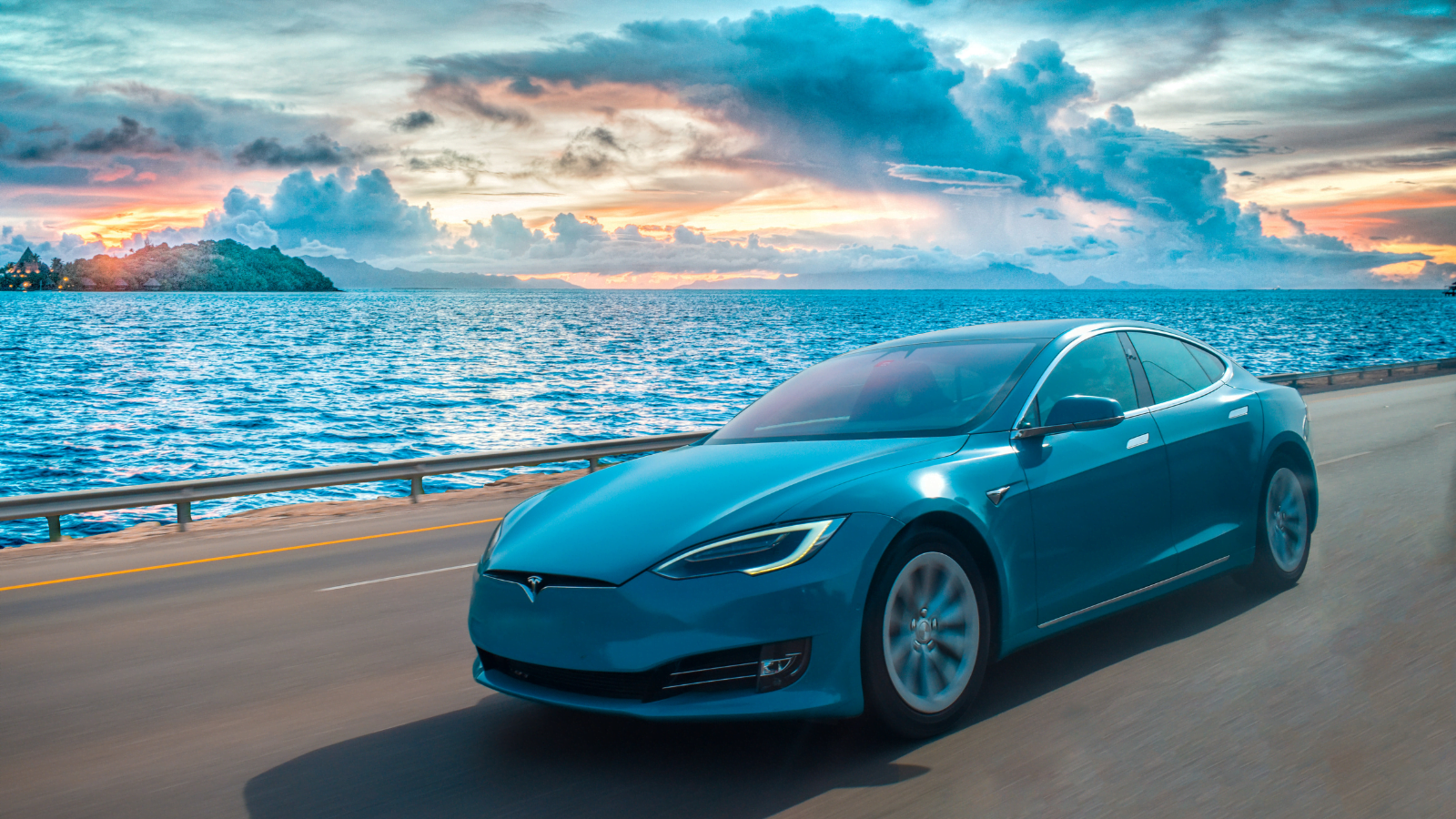
Electric vehicles are no longer a luxury for the elite—they’re a smart investment for the everyday driver. With manufacturers stepping up to the plate, affordable EVs now deliver on reliability, range, and modern comforts. Here’s a look at 18 economical electric cars engineered to outlast their payment plans.
18 Budget-Friendly Electric Cars That Last Longer Than Their Loans — Economical Electrics
